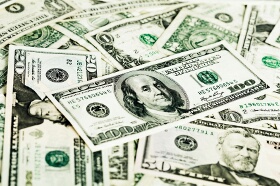The US dollar soared during this week, climbing more than 2 percent against its major counterparts, thanks to the impressive non-farm payrolls. The positive employment data fueled expectations of a December interest rate hike from the Federal Reserve.
The greenback was rising gradually over the week in an anticipation of non-farm payrolls. Yet the market had not been quite prepared to how good the actual report was. Ahead of the data, the US currency got a boost from the speech of the Fed chief who spoke about the possibility of a December rate lift-off. And the sizable employment growth boosted chances for monetary tightening next month, fueling the upward momentum of the dollar.
As for other news, the Reserve Bank of Australia refrained from easing its monetary policy, helping the Australian dollar to end the week with a smaller loss versus its US rival than it otherwise could have been. The Bank of England made no changes to policy too, but it signaled that it is not yet ready to raise borrowing costs, hurting the Great Britain pound.
EUR/USD sank from 1.1032 to 1.0744 — the lowest weekly close since April. GBP/USD tumbled from 1.5457 to 1.5049, also ending the week weakest since April. USD/JPY rallied from 120.37 to 123.19, rising to the highest rate since August. Meanwhile, AUD/USD ticked down from 0.7113 to 0.7048.
If you have any questions, comments or opinions regarding the US Dollar,
feel free to post them using the commentary form below.
